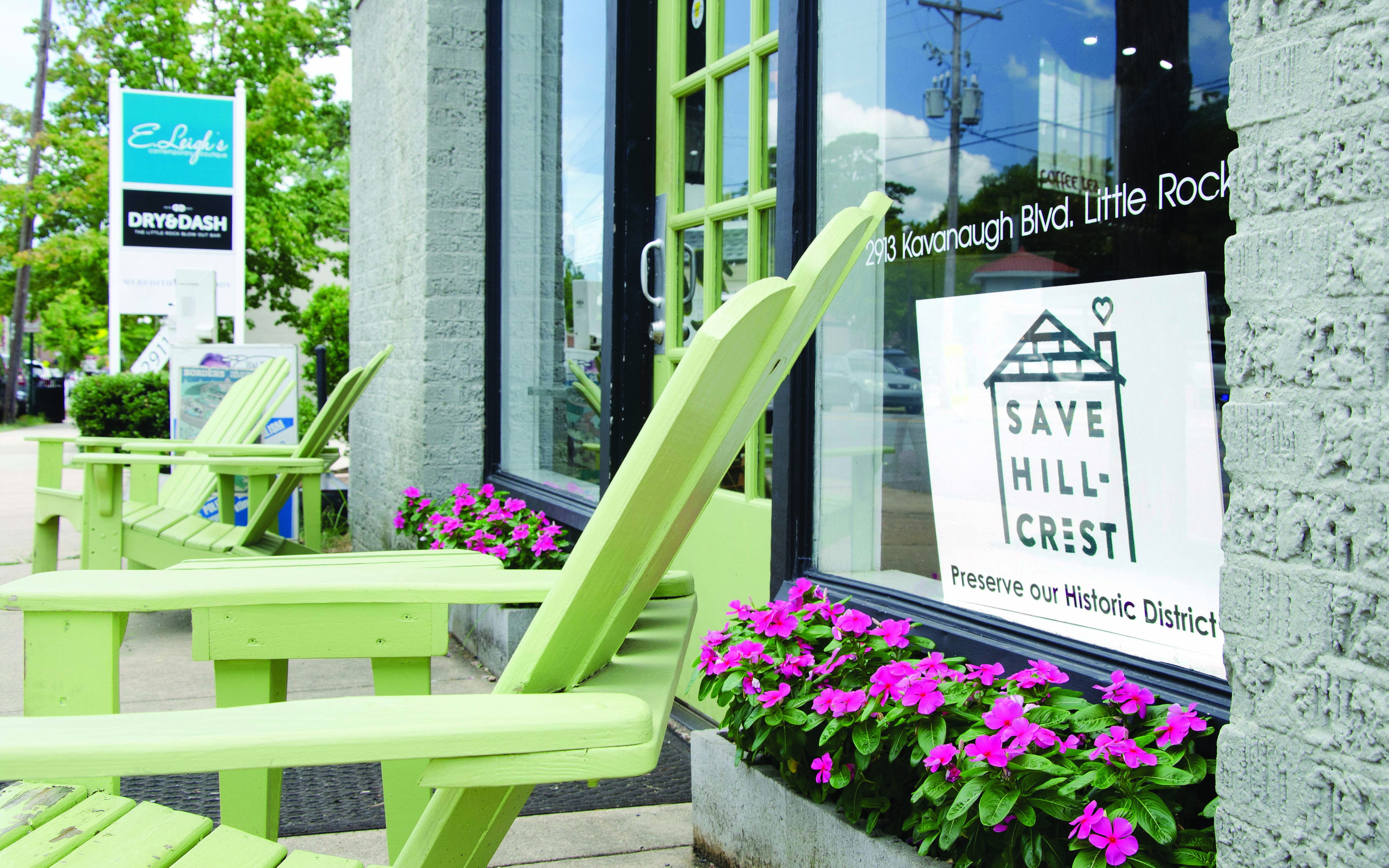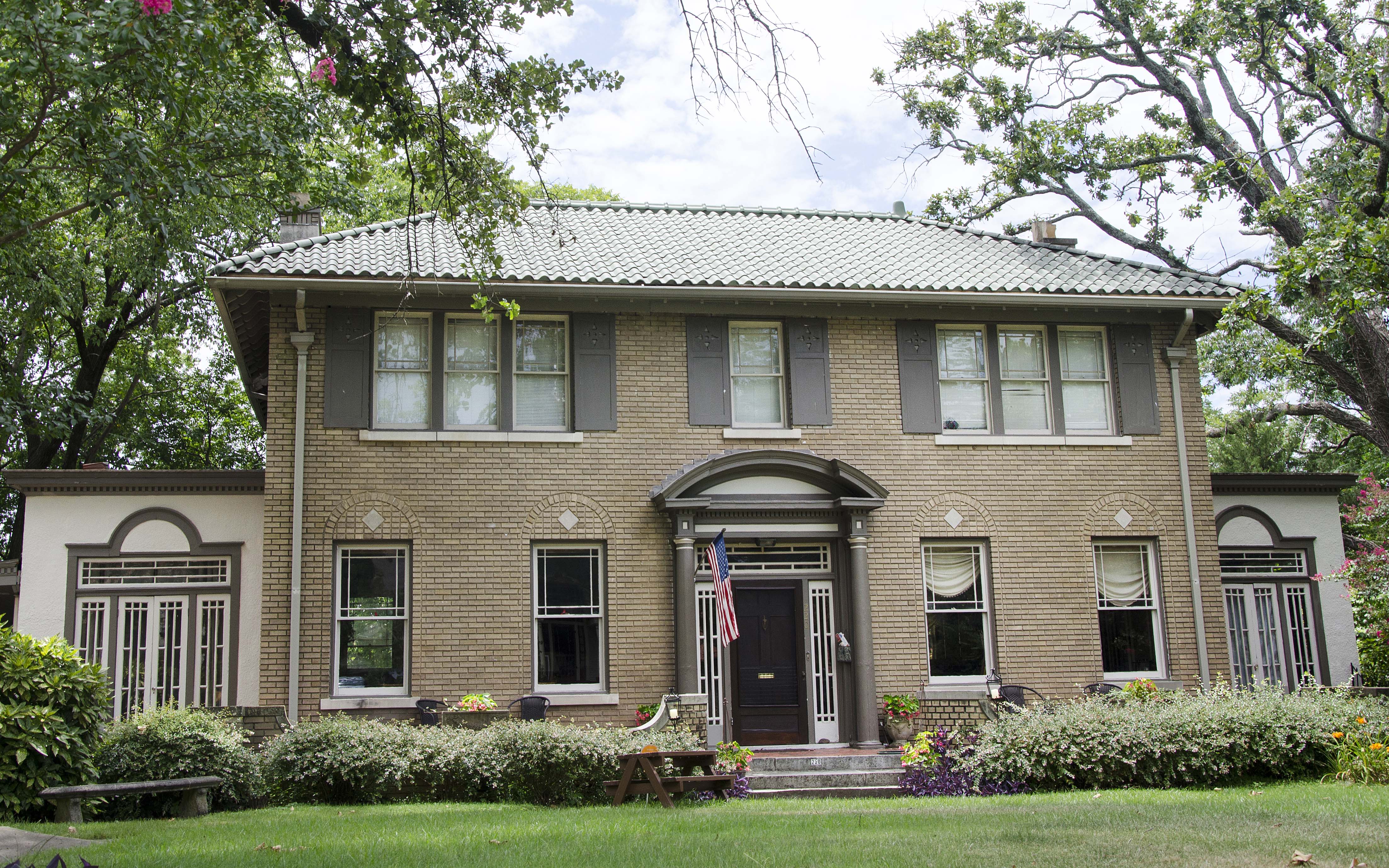A gem of a neighborhood: Saving Hillcrest!
July 16-22, 2018
By Alyx VanNess
In 2016, one of the oldest houses in Hillcrest was demolished. This historic mansion situated on North Palm Street, otherwise known as the Porter-Kumpuris House, was designed by one of Little Rock’s most respected 20th century architects, Max Mayer.
Though 2016 saw record numbers of historic demolitions in Hillcrest, it was the Porter-Kumpuris House in particular that set Antoinette Johnson in motion.
“When that house came down, I couldn’t be silent anymore,” Johnson says.
That following year Johnson started the non-profit organization, Save Hillcrest! With extensive experience in historic preservation – including her own historic preservation and interior design consulting company – Johnson repeatedly received calls from her Hillcrest neighbors, worried about the increase in home demolitions.
She says Save Hillcrest! was “a reaction to seeing so much of our historic district being changed to the point where we were in danger of losing our historic status.”
The organization hopes to both educate its neighbors about the importance of maintaining its historic status with the National Register of Historic Places, as well as to offer resources to make it happen.
“We weren’t even sure that the people in the neighborhood understood why this place was important,” she says. “Why this place matters. Why it’s important that we don’t tear these structures down and what we’re going to lose if we lose this historic district status.”
Hillcrest entered the National Register of Historical Places in 1990. The neighborhood is commonly known as Little Rock’s first suburban development, with most of its growth beginning in the 1920s.
Although Hillcrest entered its place on the National Register with 1,028 contributing resources – houses and buildings built between 1890 and 1940 that have been meaningfully preserved – Save Hillcrest! is worried that the area won’t qualify once it’s resurveyed.
“I have heard unofficially from one [Department of Arkansas Heritage] employee that the overall Hillcrest historic district will likely disappear and tax advantages will be more limited,” says Jim Pfeifer, a local architect and historian. “My fingers are far too few to count the number of contributing structures which have been demolished or drastically altered in recent years.”
The organization attributes Hillcrest’s loss of historic status to the ease in which contributing buildings can be torn down.
“There are no restrictions whatsoever on demolition,” Pfeifer explains while standing outside of a house thought to be designed by architect, Theo Sanders, located at 220 Ridgeway Drive.
“Take this house here that was built by Perry and Henrietta Stifft. Later, the youngest governor since the Civil War, Sid McMath, lived here before the governor’s mansion was built. In 1949, President Harry Truman came to visit the McMaths and took a nap here. This house, in ten minutes, if you owned it, you could get a demolition permit, get the bulldozer out here the next day, and the house would be demolished in another ten minutes.”
Save Hillcrest! is trying to alleviate the increase in these types of demolitions that threaten its historical status primarily through education.
One of their first events was a workshop offered to residents interested in utilizing historic tax credits for their properties. Johnson says they were met with enormous community support and interest.
“We found as we talked to people about these incentives, we realized they don’t know anything about this, or how to use it,” she says.
The organization also hosts walking tours, where Pfeifer volunteers his time as a guide. The tours are free and open to the public.
Pfeifer offered a small sample of the tour that took place on June 9. This tour, titled “Hillcrest Walk of Fame”, focused on local, national, and international stars who grew up in the neighborhood.
Beginning on Hillcrest’s Ridgeway Drive, Pfeifer is no more than five minutes into the tour sample when he is greeted by Johnny Roberts on his afternoon walk. A Little Rock native, Roberts played with legendary songwriter, Wayland Holyfield. Pfeifer describes Holyfield as “one of the most famous musicians that’s ever lived in Little Rock,” but says even his house didn’t survive demolition.
“In Savannah, Georgia, Johnny mercer’s house has been preserved. A lot of cities have protected their music heroes’ houses. Wayland’s has been demolished. It’s gone. There’s no protection whatsoever for the history of Little Rock,” he says.
Save Hillcrest! argues there are still houses in Hillcrest worth saving, though. Pfeifer points out houses as he walks along, listing off historic figures such as David Pryor, Annie Oakley, Wesley Clark, and author Phyllis Crawford.
“Crawford grew up on Fairfax,” Pfiefer says. “She decided to try and make it big and moved to New York and ended up working for the New Yorker. She wrote several books about her growing up in Arkansas.”
Johnson explains that these stories are important.
“It’s not just a charming place to live. There are stories and history behind each of these structures, and every time you take one down, you’re losing all of that,” she says. “We felt it was important to share those stories.”
The non-profit has two events currently scheduled, including a walking tour on September 22. For more information, visit their website at www.savehistorichillcrest.org.
PHOTO CAPTIONS:
In order to garner momentum, those interested in Hillcrest’s historic designation are proudly displaying “Save Hillcrest” signs. You can find these in front or side yards throughout the neighborhood, as well as in businesses, as pictured at River City Coffee. (Photos by Becca Bona)
220 Ridgeway Drive is thought to be designed by Theo Sanders and once occupied by Sid McMath and visited by Harry Truman.




